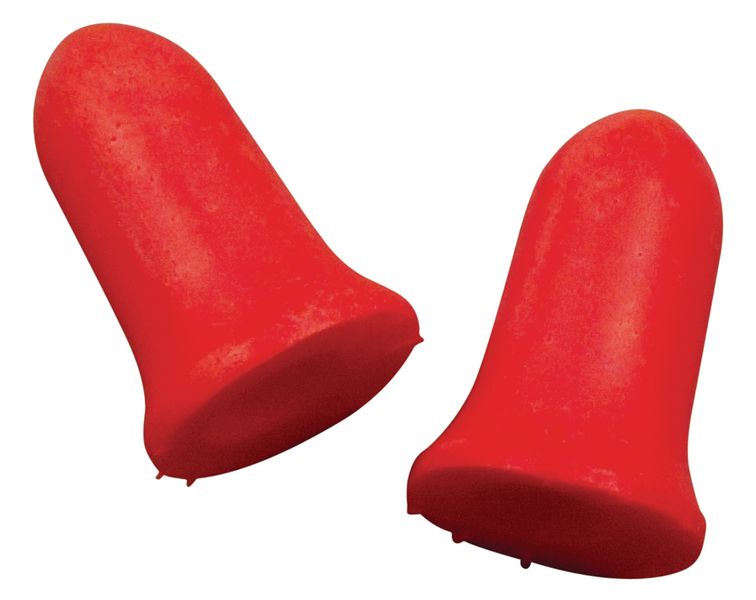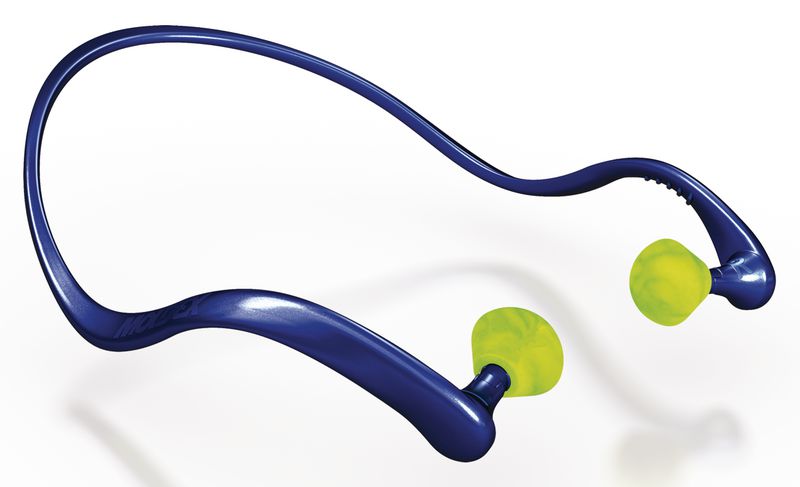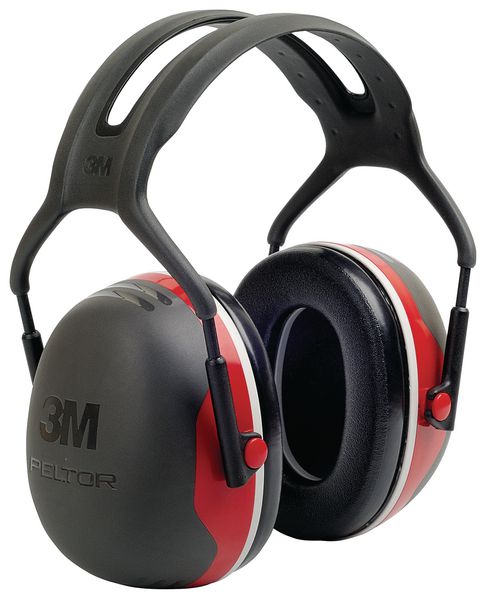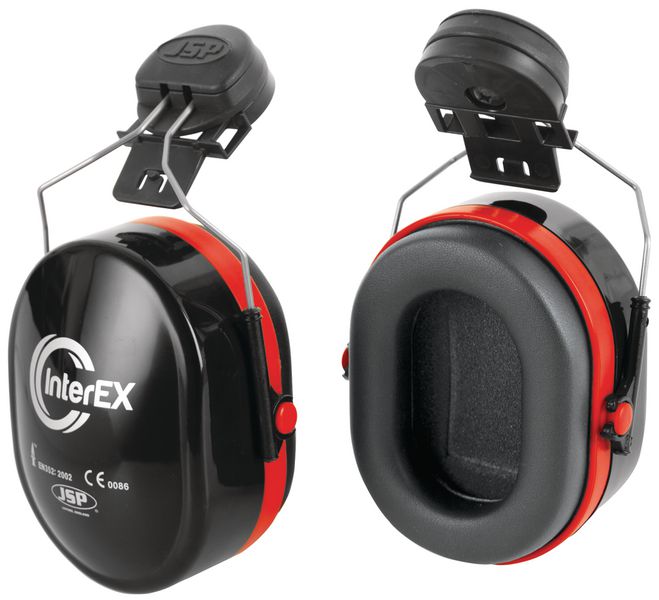-

3M™ E-A-R™ Classic Disposable Ear Plugs SNR28
From £51.99 To £85.99Supplied in: Pack of 250 pairs -

Hearing Protection Dispensers
From £19.99 To £64.49Supplied in: Single -

SparkPlugs® Moldex® Station Ear Plug Dispenser
From £41.99 To £72.99Supplied in: Single -

Howard Leight® Laser Lite® Ear Plugs SNR32
From £28.57 To £68.99Supplied in: Pack of 500 Pairs (Uncorded) -

3M™ E-A-R™ Soft™ Neon Disposable Ear Plugs - 36dB
From £79.49 To £92.99Supplied in: Pack of 500 pairs -

3M™ Peltor™ Optime™ I Ear Muffs SNR27
£18.99Supplied in: One pair -

JSP® Standard Protection Ear Muffs SNR30
£13.99Supplied in: One pair -

Uvex Ear Plug Dispenser
£30.69Supplied in: Single -

Uvex X-fit Earplugs Dispenser and Refills
From £33.81 To £55.39Supplied in: Pack of 300 pairs -

3M™ E-A-R™ Classic Disposable Ear Plugs One-Touch Dispenser
From £102.99 To £190.99Supplied in: Single kit -

3M™ Peltor™ Optime™ III Ear Muffs 35dB
£26.73Supplied in: One pair -

3M™ E-A-R™ Hearing Protection PPE Station
£99.99Supplied in: Single -

Howard Leight® Max Ear Plugs - 37dB
£35.99Supplied in: Pack of 200 pairs -

Delta Plus Ear Defenders - SPA3
£7.99Supplied in: Single -

Howard Leight® Sync™ Stereo Earmuff - 31 dB
£44.99Supplied in: One pair -

Delta Plus Ear Defenders - INTERLAGOS
£18.99Supplied in: Single -

Noise-Reducing Moldex® WaveBand® 1K - 27 dB
£30.99Supplied in: Pack of 8 -

Howard Leight® Bilsom® 303L Ear Plugs - 33dB
From £28.99 To £31.99Supplied in: Pack of 200 pairs -

3M™ Peltor™ X3 Earmuffs 32 dB
£32.69Supplied in: One pair -

JSP® J-Muff Ear Muffs SNR25
£5.99Supplied in: One pair -

JSP® Sonis® Helmet Mounted Ear Muffs - 27/32/37 dB
From £16.99 To £30.99Supplied in: Single -

Uvex Whisper Reusable Earplugs - 23 dB
£47.92Supplied in: Box of 50 pairs -

Reusable Moldex® Rockets® Ear Plugs - 30 dB
£80.30Supplied in: Pack of 50 pairs -

Delta Plus Clip-On Ear Defenders
£19.99Supplied in: Single -

Howard Leight® SmartFit® Ear Plugs 30dB
£44.99Supplied in: Pack of 50 pairs -

JSP® InterEX™ Noise-Reducing Ear muffs - 28 dB
£28.99Supplied in: One pair -

Folding Earmuffs 30dB
£6.99Supplied in: One pair -

JSP® Sonis® Ear Muffs - 27/31/32/37 dB
From £23.99 To £32.99Supplied in: Single -

JSP® Soundstopper® Ear Plugs SNR37
£36.99Supplied in: Pack of 100 pairs -

3M™ Peltor™ X5 Earmuffs and Ear Cups- 36/37 dB
£43.59Supplied in: One pair -

3M™ E-A-R™ Classic Corded Foam Ear Plugs 29dB
£90.49Supplied in: Pack of 200 pairs -

3M™ E-A-R™ 1100 37dB Single-Use Ear Plug Refill
£94.30Supplied in: Pack of 500 pairs -

Delta Plus Ear Defenders for Safety Helmets
£11.99Supplied in: Single -

Moldex® SparkPlugs® Ear Plugs - 35 dB
From £73.12 To £135.39Supplied in: Box of 100 packs of 4 -

Howard Leight™ Universal Aluminum Ear Plug Dispenser
£86.80Supplied in: Pack of 500
Ear Protection
Need help?
 Do you know when you should use Ear Protection?
Most Extensive Range of Ear Protection in the UK with Fast Delivery
Do you know when you should use Ear Protection?
Most Extensive Range of Ear Protection in the UK with Fast Delivery
Many industrial environments can be exceptionally noisy, which makes it necessary to provide workers with hearing protection. Failure to adequately protect the ears can cause temporary or permanent hearing loss and other hearing related conditions, including tinnitus.
There are different types of protective equipment available, including ear muffs and ear plugs, designed to suit individual needs such as noise level exposure and the other types of PPE being worn, such as hard hats. To ensure your workers are using the correct products, it’s vital to have a strong understanding of the noise that is present, and how this can be managed.

Expert Information
Also discover:
PPEHead protectionSafety glovesFall arrest system Eye ProtectionBreathing protectionSafety footwearEar muffsEar plugs
Ear Protection – What You Need to Know
There’s more to ear protection than simply popping in a pair of 3M™ E-A-R™ Classic Corded Foam Ear Plugs 29dB or using 3M™ Peltor™ Optime™ III Ear Muffs 35dB to cover your ears. The right ear defender for you will be specific to your environment and the noises generated in it.
The Law on Ear Protection
The Health and Safety at Work etc. Act 1974 puts a duty on employers to provide hearing protection when noise exposure is between the “lower and upper exposure action values”. In the UK, this is between 85 and 140 decibels. Your duties include:- Providing ear protection when employees ask for it.
- Ensuring that employees know how to properly use an ear defender.
- Identifying ear protection areas and marking them with the required warning and guidance signage.
- Seeing that ear plugs, ear muffs and other types of ear defenders are properly used and maintained.
Here at Seton, you’ll find top quality ear plugs and ear defenders for noise cancelling. Our health and safety experts considered all environments and eventualities for our vast selection of ear defenders. So, whether you work in a lab or on a noisy construction site, we have what you need to protect your hearing.
How Do Ear Defenders Work?
Ear plugs and ear muffs defend your hearing against excess noise but in different ways. Ear plugs are inserted into the ear, while ear muffs, such as Seton’s popular 3M™ Peltor™ Optime™ I Ear Muffs SNR27 , cup the entire ear.Either memory foam or silicone ear plugs provide basic ear protection by cancelling out noise in the immediate vicinity.
To apply some of these, you roll up and press into the ear canal where they expand to provide optimum protection. You’ll also see flanged and tapered versions for different levels of hearing protection.
Noise-reducing ear plugs are a hygienic choice because they’re disposable. For example, our heavy-duty Uvex Whisper Reusable Earplugs - 23 dB are comfortable and easy to fit. They:
- Expand to fit the size and shape of your ear.
- Resist sweat and humidity, making them ideal for tough environments such as manufacturing and food processing plants.
- Have a cord that makes removal and reinsertion during the workday a breeze.
We also stock Reusable Moldex® Rockets® Ear Plugs - 30 dB with a cord. These moulded ear plugs have a 30dB (decibel) SNR rating and come in a pocket-sized carry case for improved hygiene. An air bubble at the end improves comfortable wearing, while you can easily insert and remove them thanks to the easy-grip design.
Noise-cancelling ear defenders or ear muffs usually feature a headband and cups that cover the ears. Acoustic foam, which blocks out or absorbs noise, lines these cups.
Our comprehensive range includes the ever-popular 3M™ Peltor™ X3 Earmuffs 32 dB , which effectively protect hearing in high-noise environments where people use heavy machinery. They are lightweight and compact, and feature large cushions that reduce pressure around the ears for improved comfort.
You should also look at our noise-cancelling ear defenders for safety helmets. Simply clip them onto your hard hat when working. Made from rugged ABS with cushioned foam inserts, this product handles tough environments with ease.
What are Ear Defenders Used for?
Our hearing is prone to damage when exposed to excess or repeated noise. Many work settings involve the use of noisy equipment and warrant the need for ear defenders. An Ear defender is designed to fit over the ear, with the strap around the crown of the head. Ear defenders are typically used in louder environments with machinery or construction equipment to protect the ears from debris and dust, and also reduce noise for the wearer.In short, ear defenders are used to protect hearing and prevent loss of hearing. Overprotection, however, also poses risks when it hampers communications and the audibility of warning signals.
At What Decibel Levels Should Ear Protection be Worn?
It’s essential to consider the level of noise cancellation needed for a specific work environment. To get ear plugs or ear muffs that suit your workplace, you need to consider the single number rating (SNR), which details the decibel levels of hearing protectors.The HSE recommends that you use a hearing defender with a:
- 20 dB or less rating for noise levels between 85 and 90 dB.
- 20 to 30 dB rating for noise levels between 90 and 95 dB.
- 25 to 35 dB rating for noise levels between 95 and 100 dB.
- 30 dB or more rating for noise levels between 100 and 105 dB.
How to Use Silicone Ear Plugs
Silicone noise-reducing ear plugs offer effective protection in any environment. Just roll them into a ball and press them into your ear to mould over the ear canal.Whether you need a 3M™ E-A-R™ Hearing Protection PPE Station , or 3M™ Peltor™ X5 Earmuffs and Ear Cups- 36/37 dB that can take the day-to-day punch of high-noise environments, Seton has you covered. Browse our broad selection of ear protection today.

